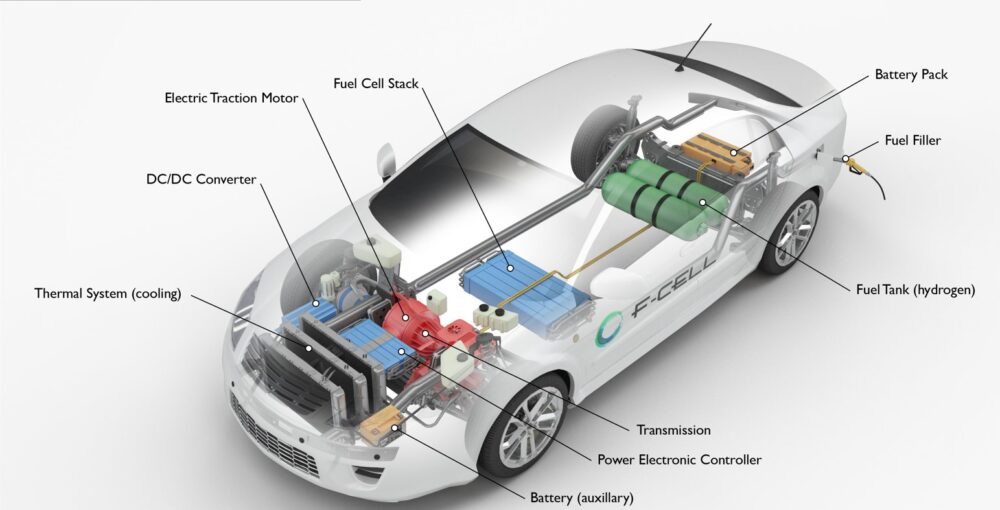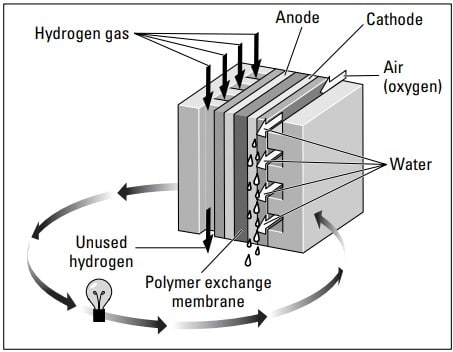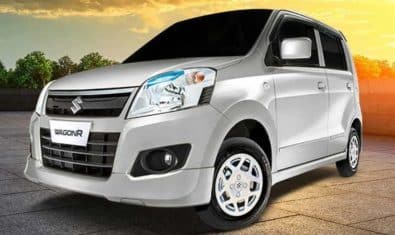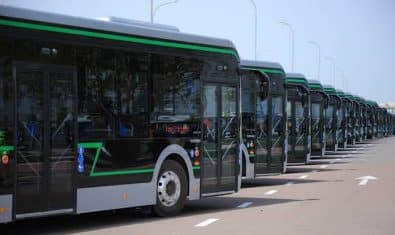The debate on climate change has picked up the pace and a major concern is carbon emissions from internal combustion vehicles.
This has pushed automotive manufacturers to pursue alternate fuel solutions that will result in either lesser emissions or none at all. One solution is electric vehicles (EVs) which, thanks to Tesla, has received worldwide recognition. However, the industry also had another lesser-known solution — Hydrogen fuel cell electric vehicles.
How They Work
Like fully electric vehicles, Hydrogen Fuel Cell Electric Vehicles (HFCEVs), or simply Fuel Cell Electric Vehicles (FCEVs) use electricity to power a motor, but unlike EVs, HFCEVs draw their power from a hydrogen fuel cell (instead of a battery pack).
The overall power produced by these cars is dependent on their electric motors. FCEVs also have an internal battery that stores energy generated from braking, which is later utilized in short accelerations and to smooth the power supply delivered from the fuel cell.
The process of drawing energy from hydrogen starts with the introduction of hydrogen gas at the anode of the fuel cell where the hydrogen atom is split into positive and negative ions. A polymer exchange membrane in the middle prohibits the movement of negative ions towards the cathode, and they have to take an alternate route through the electric motor.
When the negative charge finally reaches the cathode, it reacts with the positive ions and oxygen atoms to produce water vapors. This is part of what makes hydrogen-powered cars enticing, they only produce water as emissions and are completely safe for the environment.
A number of fuel cells are interlinked in a single vehicle to increase the electrical output.
Essential Components
| Component | Function |
| Auxillary battery | Provides electricity to start the car and run the accessories |
| Main battery pack | Stores energy from regenerative braking |
| DC converter | Converts high voltage DC to low voltage DC |
| Electric motor | Propels the vehicle forward |
| Power electronics controller | Manages the flow of electric energy to the components |
| Thermal or cooling system | Maintains the proper operating temperature |
| Electric transmission | Transfers power from the motor to wheels |
| Fuel cell stack | Stack of electrodes used to produce electricity |
| Fuel filler nozzle | Used for filling fuel |
| Fuel tank | Stores fuel (hydrogen) |
Benefits
- FCEVs have low refilling periods as compared to EVs as their tanks take only a few minutes to be filled whereas it can take hours to fully charge an EV.
- FCEVs have a significant mileage advantage over both internal combustion engine vehicles and fossil fuel vehicles. They can reportedly cover a distance of 350 miles or 563.2 km on a single tank. For instance, the Toyota Mirai recently set a world record by covering a distance of 1359.9 km on a single tank.
- FCEVs are quiet and the only emissions they produce are water vapors.
- The operating efficiency of internal combustion engines is between 20-20 percent while the efficiency of the hydrogen fuel cells is between 60 and 80 percent.
- Energy stored in hydrogen will not dissipate as long as it is not used. On the other hand, storage mediums like batteries or capacitors lose energy over time and need to be replaced.
Challenges
- Hydrogen needs to be stored at extremely low temperatures (-252.8 °C) and at 1.013 bar of pressure. This requires special infrastructure that can cost between $2 million to $2.8 million.
- This cost goes up to $3.2 million if the station makes hydrogen on-site.
- Petrol/gasoline currently costs $0.93 per liter in the US, and the cost of charging an EV is estimated at around $9 for a range of 200 miles (321.8 km). Alternatively, hydrogen costs up to $80 to fill up the tank.
- Fuel stations or recharging stations for EVs outnumber the refilling stations for FCEVs.
Manufacturers Investing in FCEVs
EVs are ahead in the race of alternate fuel vehicles but manufacturers have not given up on FCEVs. Automotive giants like Honda, Toyota, and Hyundai have already rolled out fuel cell vehicles like the Honda Clarity, the Toyota Mirai, and Hyundai ix35 Fuel Cell. Nexo and German manufacturers like BMW and Audi are also investing in HFCEVs.
Reuters reported in September that BMW is the biggest proponent of HFCEVs in Germany and plans to bring a mass production model to market by 2030. Meanwhile, the X5 SUV concept that is partly funded by the government is also making ground. BMW’s Vice President of the hydrogen fuel cell car program has also stated that the company will manufacture a test fleet of 100 cars in 2022.
Although EVs have a significant lead over FCEVs, the investment from automotive manufacturers into the sector may solve the problems that are holding FCEVs back, and present the masses with another option besides battery-powered vehicles.































